We’ve all heard the maxim, “You are what you eat,” but what if there’s more than just food? What about “You are your surroundings?” This leads us to interior paint color theory. Color theory is a study of color and how a person reacts to the colors they see. In interior design, this can be used to create a space that has a distinct look, evokes the desired mood, or encompasses a particular style.
We are a product of our environment and are constantly influenced even without realizing it. The same thing goes for your home. Your wall colors can impact your outlook on everyday life and tasks. Colors can stimulate or calm people, and many advertisers and marketers use this to their advantage. For example, colors that increase appetite and elevate mood, like yellow and red, are used in many food chain logos. (Does McDonald’s ring a bell?)
We’ve found the ideal wall colors to paint your living room, dining room, kitchen, workout room, and bedroom, to surround yourself in an environment that is optimal for overall health and happiness.
The Kitchen
White and yellow kitchens may be popular for their fresh look (white) and cozy appeal (yellow), but they do little to guide you in making the right eating choices.
The colors on your wall reflect and inform the color of the food you’d most likely reach for. So choose healthy colors! An orange kitchen will make you gravitate towards orange foods, such as (you guessed it) oranges. But orange isn’t the most pleasant color to eat around.
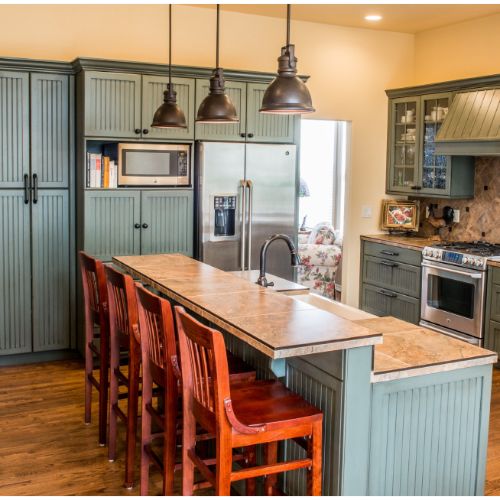
Greens (which prompt you to make healthy decisions) not only calm you but remind you of the fresh, hearty foods that are good for your body. White is a neutral color, so it may result in neutral eating habits.
The Dining Room
It doesn’t matter what you paint your dining room; when you’re hungry, you’re hungry. But we are psychological creatures, and colors can psych us out.
The good thing about dining rooms is that you can create a room based on what you want to achieve: 1. an increased appetite (good for guests and kids); 2. to only eat when you’re hungry (healthy and neutral); 3. a suppressed appetite (if you want to cut back on calories).
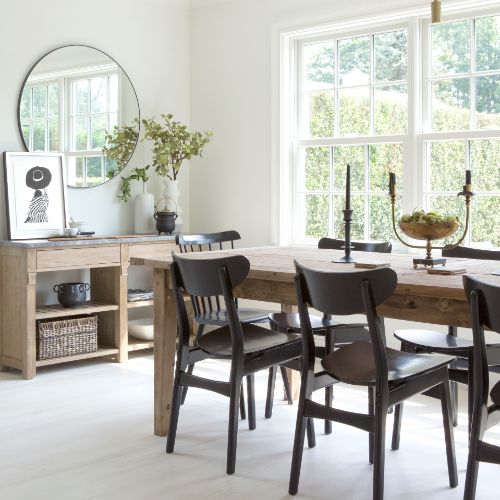
White is an easy go to since it is neutral and still. It won’t necessarily prompt you to do much eating, which can be a good thing if that is what you’re looking for.
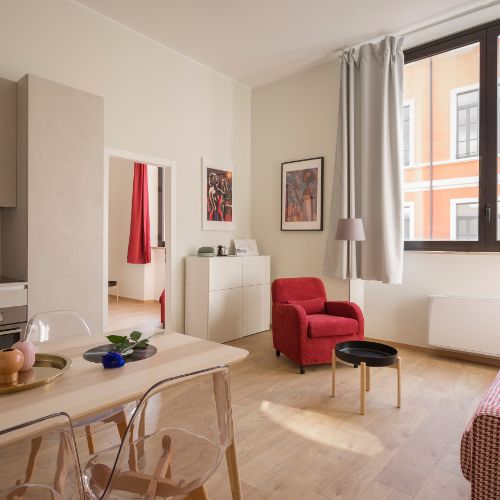
Red will increase the appetite – but you don’t need to douse your room in it. You can showcase it in detail and in furniture, such as chairs.
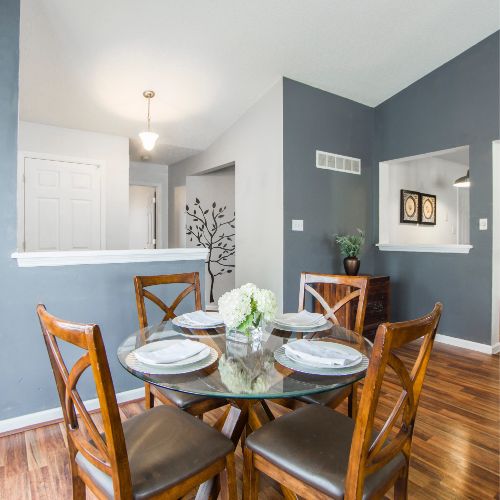
Blue will not only suppress your appetite but instill calmness. It will also make the room appear brighter and larger.
The Bedroom
While a study showed that people who sleep in blue rooms sleep longer and easier than any other color, there are other colors that produce similar tranquility.
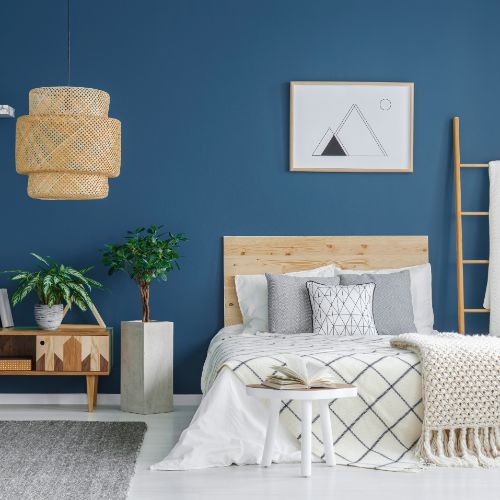
Blue is the ideal color for sleep. Go with a muted, earthy tone that resembles the ocean at dawn. If you want a truly sedative color, go for indigo. If you are looking for an easier transition, a slate gray with hints of blue is excellent for producing dim lighting, while you ease your mind and eyes to sleep.
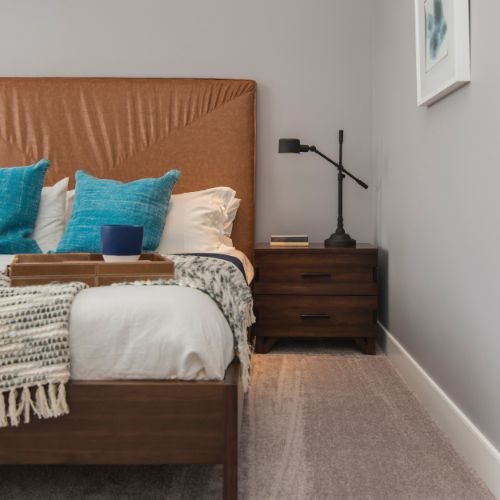
If your bedroom is on the smaller side, taupe is great for smaller rooms. It works well with little natural light and adds cheerfulness, but is muted enough to not interrupt the process of falling asleep.
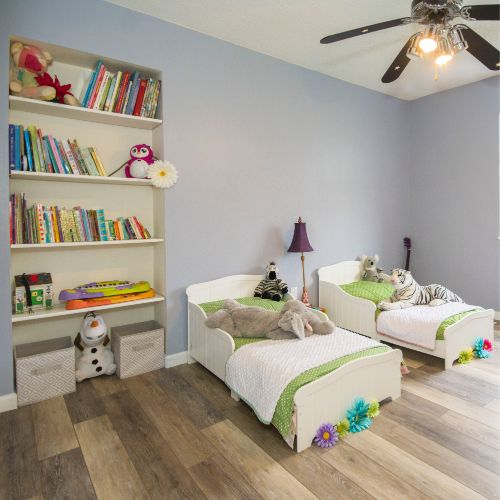
If you are looking for a color that is a bit more fun, try a pale violet. It is great for pacification while also having a soft, soothing aura. If you are looking for a color that works for your kids all of this color will also work.
The Living Room
White can be a great source of a foundation, but it doesn’t mean your living room should look bland. For whatever vibe you want your living room to have, just spin the color wheel and see what it lands on.
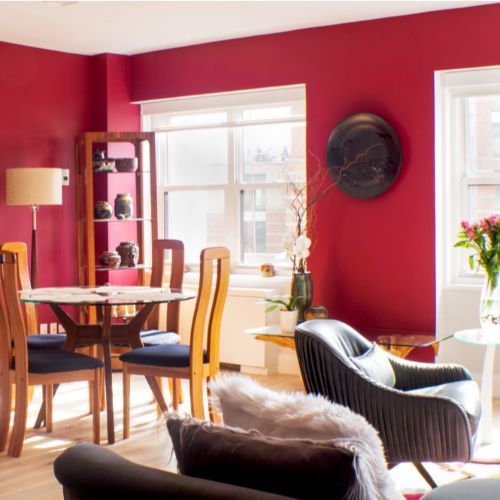
For an elevated and energized mood and that reveals our more passionate side, red is the way to go. A little drama in a space never hurt anyone!
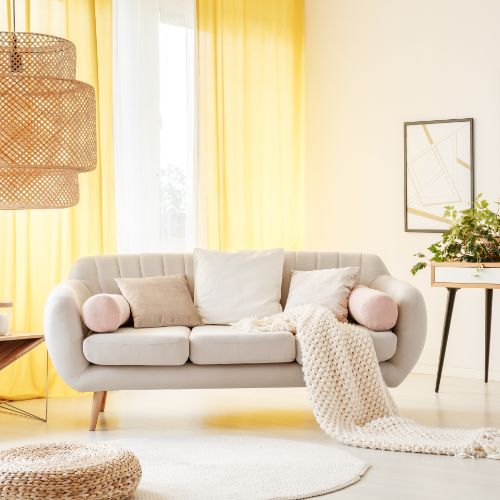
Yellow is a great living room color for those that are looking to stay open and cheery.
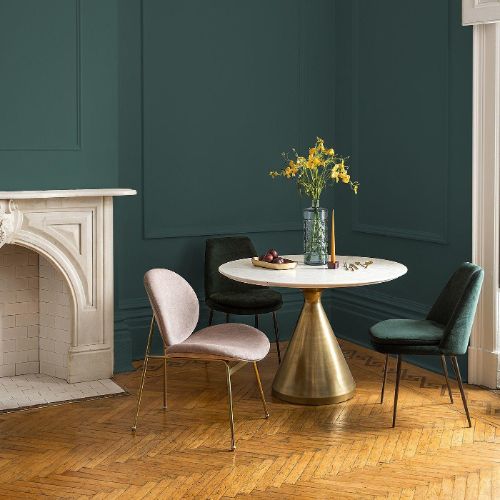
Bring the balance and harmony of the natural world indoors with a rich green color. PPG’s Night Watch is a great choice.
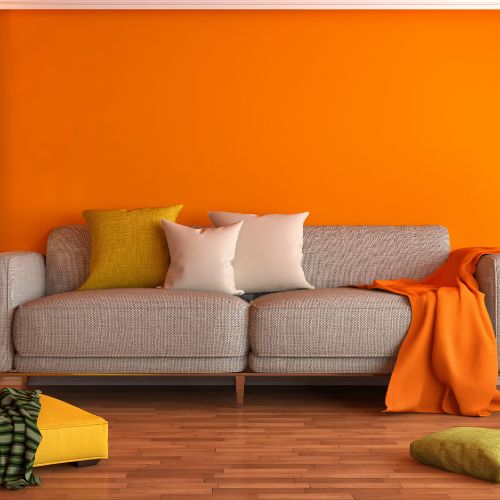
Capture the warmth of the sun and create a southwestern vide with orange. This color is great to warm up a space while keeping it relatively bright.
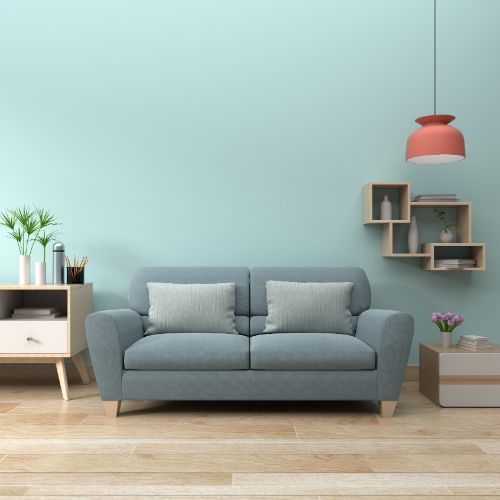
We can’t say enough about blue. While more traditional blue tones are serene, blues that lean towards turquoise have an uplifting and optimistic effect.
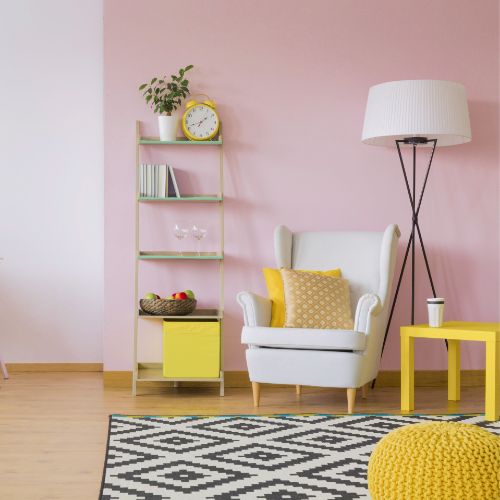
Pink is definitely making a comeback. This color has the strength and is not overbearing. A great color to add a touch of character to your living room.
The interior paint color theory tells us that colors you put on your walls impact much more than aesthetic, they impact how we interact with the world around us. If you are looking to test out some colors, try our sample program. Paintzen will send out free 8″ x 8″ paint swatches” straight to your door. When you’re ready to paint, our interior paint pros can help. Get started today!